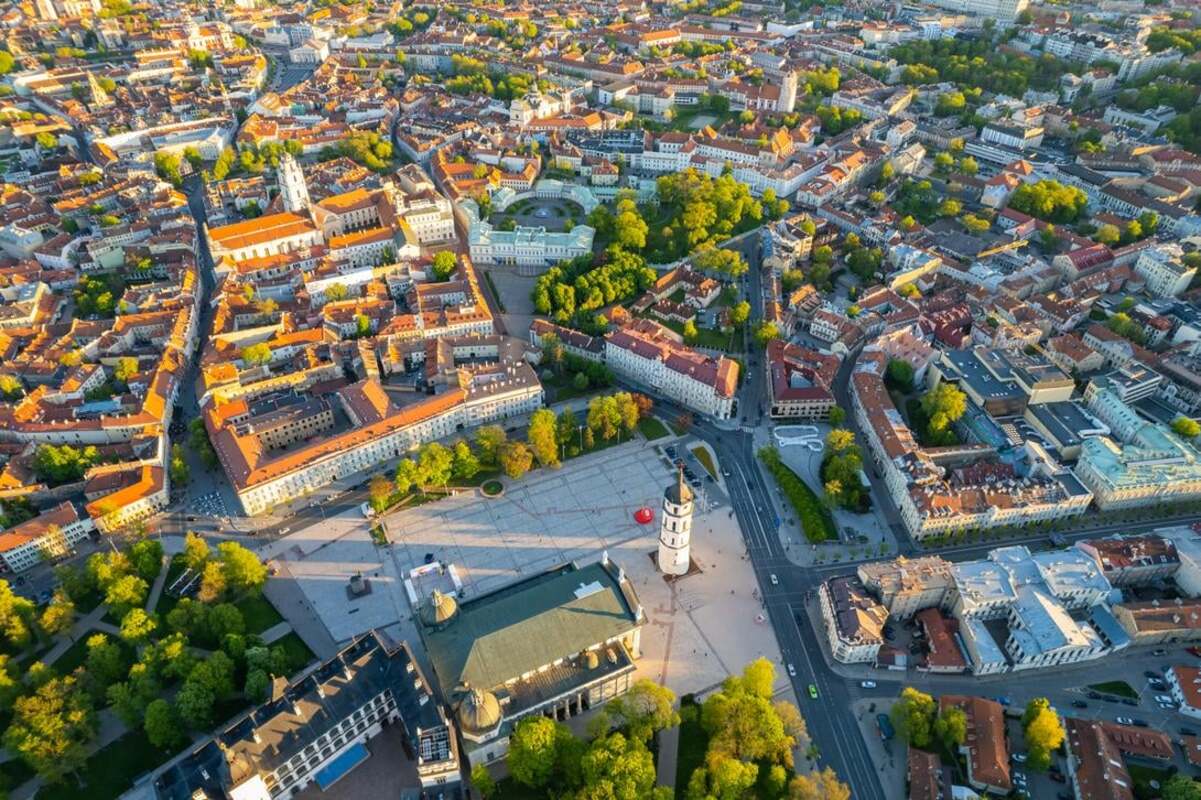Lithuania is a small country on the Baltic Sea that surprises visitors with its rich history, diverse culture, and natural beauty. This nation skillfully blends ancient traditions with modern achievements in technology and education. Every city and region has its unique character, offering deeper insights into national identity. In this article, we present fascinating and sometimes unbelievable facts about Lithuania that you might not have known.
- Lithuania was the first country to declare independence after the collapse of the Soviet Union. This historic move took place on March 11, 1990, inspiring other Baltic nations to follow suit. Since then, Lithuania has charted its course as a sovereign democratic republic. This date is celebrated as a national holiday.
- Vilnius, the capital, is known as one of the greenest cities in Europe. Nearly 40 percent of its territory is covered by parks, forests, and natural reserves. One of the highlights is the Verkiai Regional Park, which preserves a piece of wild nature within the city’s borders. The Old Town of Vilnius is also a UNESCO World Heritage Site.
- Lithuania is home to the geographical center of Europe, as calculated by the French National Geographic Institute. This point lies around 26 kilometers north of Vilnius, near the village of Purnuškės. A monument marks the site and attracts both tourists and scholars. It is a symbolic location representing European unity.
- During the Middle Ages, Lithuania was the core of the Grand Duchy of Lithuania. This vast state stretched from the Baltic to the Black Sea, making it one of the largest countries in Europe at the time. Later, Lithuania entered a historic union with Poland, forming the Polish–Lithuanian Commonwealth. That period greatly shaped the cultural and political landscape of Eastern Europe.
- The Lithuanian language is one of the oldest surviving Indo-European tongues. It has preserved many archaic features no longer found in other languages of the same family. Linguists around the world study it to gain insights into the history of European languages. Today, Lithuanian remains the primary spoken language of the country.
- July 6 is celebrated as Statehood Day, commemorating the coronation of King Mindaugas in 1253. He was the first and only crowned king of Lithuania. On this day, Lithuanians across the world simultaneously sing the national anthem. It’s a tradition that strengthens national unity and identity.
- The Curonian Spit is a unique natural phenomenon partly shared between Lithuania and Russia. It is a narrow strip of land between the Baltic Sea and the Curonian Lagoon, known for its shifting sand dunes and dense pine forests. The Lithuanian part of the spit is protected as a UNESCO World Heritage Site. It is a paradise for eco-tourism and birdwatching.
- Lithuania is among the global leaders in internet speed and digital infrastructure. Even remote rural areas enjoy fast and stable internet connections. This advantage fuels the growth of tech startups and digital innovation. The country has positioned itself as a rising hub in the tech world.
- Traditional Lithuanian beverages like kvass and local craft beers are deeply rooted in culture. In regions such as Samogitia, family-owned breweries have passed down beer-making techniques for generations. These drinks often accompany folk festivities and rural events. They are considered part of the nation’s intangible heritage.
- Near the city of Šiauliai lies the Hill of Crosses, a unique spiritual and cultural site. Thousands of crosses have been placed there over decades, symbolizing faith, resistance, and hope. Visitors from around the world come to witness this powerful place. It is one of Lithuania’s most moving and photographed landmarks.
- Lithuanian folk crafts have been preserved and promoted for centuries. Woven textiles, wooden sculptures, and straw ornaments are still made by hand today. These skills are passed from generation to generation. Folk festivals and markets often celebrate these traditional art forms.
- The Museum of Illusions in Vilnius offers an engaging experience for visitors of all ages. It combines science, art, and optical phenomena in interactive exhibits. The museum is popular among tourists and school groups. It represents a fresh side of Lithuania’s cultural scene.
- Klaipėda, Lithuania’s main seaport, is renowned for its amber markets and festivals. Baltic amber has been prized since ancient times for jewelry and spiritual artifacts. Amber fairs in Klaipėda showcase artisans and their intricate creations. The stone is often called the “gold of the Baltic Sea.”
- Trakai Island Castle, located just 30 kilometers from Vilnius, is a medieval gem surrounded by lakes. Once a residence of Lithuanian dukes, the castle has been fully restored. Today, it hosts historical reenactments, concerts, and exhibitions. Its setting makes it one of the most picturesque locations in the country.
- Lithuania regained independence twice in the 20th century — in 1918 and again in 1990. Both events are honored with national holidays and public events. These dates remind citizens of their resilience and desire for freedom. The nation takes pride in its peaceful democratic transition.
- Lithuanian cuisine is hearty and rich in flavors. Potatoes, mushrooms, pork, and dairy products dominate many traditional dishes. The national dish, cepelinai, are large potato dumplings filled with meat and served with sour cream and bacon bits. They are both filling and symbolic of home-style cooking.
- The Vilnius University Library is one of the oldest in Europe, dating back to the 16th century. It holds rare manuscripts, ancient books, and archives of historical value. The library serves as a hub for scholarly research. It’s a point of pride for the country’s academic community.
These interesting facts about Lithuania reveal a country full of character, resilience, and beauty. It is a land where ancient traditions meet digital progress, and every corner offers something worth discovering. If you are looking for a destination that combines heritage, nature, and innovation, Lithuania is sure to exceed your expectations.





